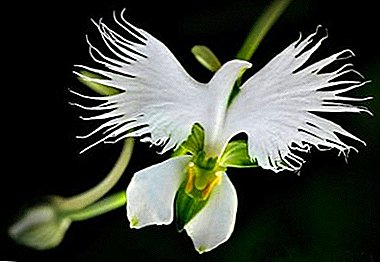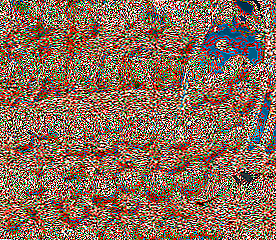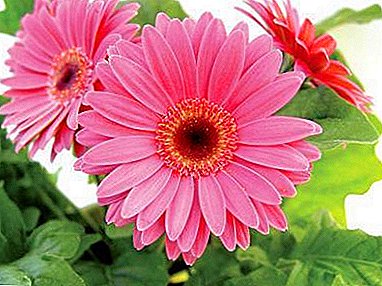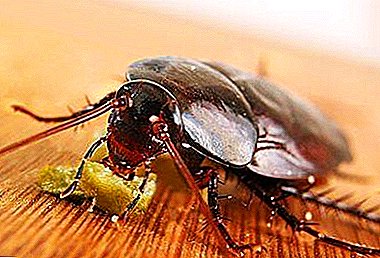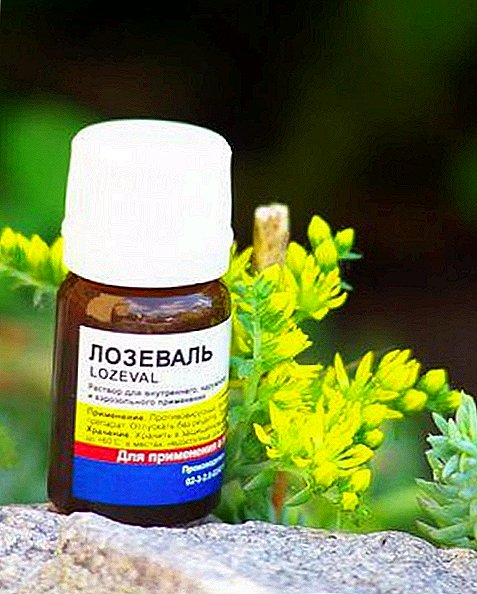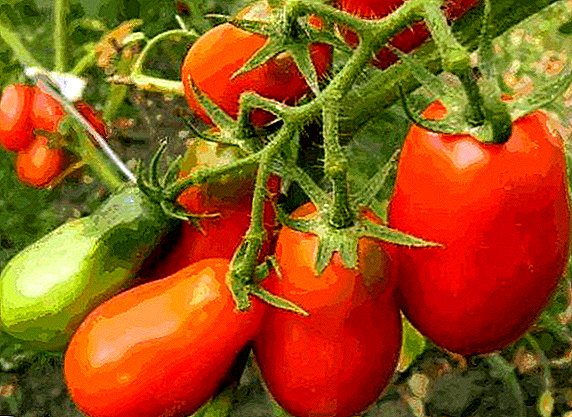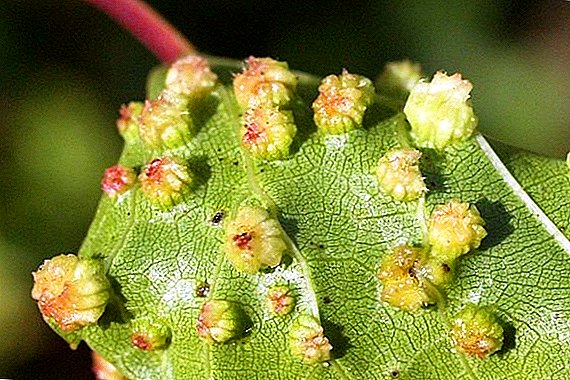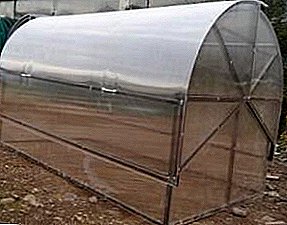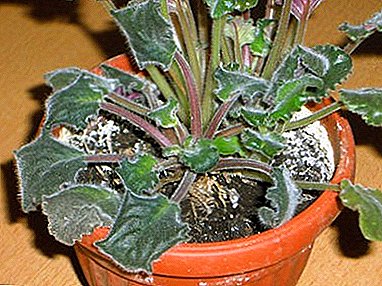 Each summer resident knows well that if for several years in a row they plant the same crops in the same place, then even with seemingly identical conditions of care, they become more frail every year and fruit worse. This phenomenon is caused by soil depletion, which, in turn, is due to several factors.
Each summer resident knows well that if for several years in a row they plant the same crops in the same place, then even with seemingly identical conditions of care, they become more frail every year and fruit worse. This phenomenon is caused by soil depletion, which, in turn, is due to several factors.
The importance of good crop planning
The first is that pathogens and all kinds of pests accumulate in the soil. For example, potatoes are known to be a favorite delicacy. Colorado beetles. If the plantation of this crop does not change its location for several years, there is no need for the pest to migrate in search of food - after wintering it immediately finds itself in favorable conditions and immediately begins to destroy the plant. In addition to the Colorado potato beetle, planting potatoes contribute to the accumulation of late blight pathogens and click larvae and moth larvae in the soil.
With other cultures, the situation develops in the same way. On a plot planted with the same crop, the number of those pests will increase year by year.which are dangerous for her and, accordingly, it will be more and more difficult for the plant to withstand such an invasion. Particularly affected by this factor are cabbage, tomatoes, cucumbers, celery, beans, lettuce.  The second is an increase in the concentration of harmful substances secreted by the roots of a particular culture (the so-called colins) and which are toxic to the culture itself. Some plants are very sensitive to the effects of such poisons (for example, beets and spinach), others are more resistant (carrots, pumpkins, radishes, parsley), others almost do not react to colins (legumes, leeks, corn). In addition, different plants emit different amounts of such harmful substances, for example, especially a lot of them in the soil after cucumbers, carrots and cabbage.
The second is an increase in the concentration of harmful substances secreted by the roots of a particular culture (the so-called colins) and which are toxic to the culture itself. Some plants are very sensitive to the effects of such poisons (for example, beets and spinach), others are more resistant (carrots, pumpkins, radishes, parsley), others almost do not react to colins (legumes, leeks, corn). In addition, different plants emit different amounts of such harmful substances, for example, especially a lot of them in the soil after cucumbers, carrots and cabbage.
The third is the depletion of nutrients in the soil. Each culture has its own set of nutrients necessary for normal development. It is clear that it is their plant and will try to extract from the soil. For example, if cabbage is very much in need of potassium, then after its planting this element in the soil will remain less and less, while, say, after radish, potassium reserves are not depleted so rapidly.
 It is easy to understand that the situation can be corrected by alternating between cultures planted on the site from year to year. This procedure has the name of crop rotation and is a whole science. However, if there is no time to engage in complex theoretical training, it is enough to learn a few basic rules, and the harvest on your site will always be equally abundant.
It is easy to understand that the situation can be corrected by alternating between cultures planted on the site from year to year. This procedure has the name of crop rotation and is a whole science. However, if there is no time to engage in complex theoretical training, it is enough to learn a few basic rules, and the harvest on your site will always be equally abundant.
Rule number 1
One after another, it is impossible to plant not only the same culture for several years in a row, but also close relatives (representatives of the same species), as they usually have common pests, react to toxins in the same way and consume the same composition of trace elements.
Rule number 2
The average period during which the earth should rest after a certain culture is two years. (one year is usually not enough for full recovery), but for some plants this period is much longer. So, carrots, cucumbers, parsley, beets should not return to their former place for at least 4 years, and in relation to cabbage it is better to withstand all 7 years! These periods can be increased, but it is undesirable to reduce.
Rule number 3
 Plants tend not only to consume trace elements from the soil, but also to enrich it with certain useful substances and properties. therefore Correct crop rotation can allow not only to preserve the elements that are especially necessary for the plant, but also to improve the soil composition and structure without additional procedures. For example, legumes loosen the soil and enrich it with many minerals. Melon and buckwheat saturate the soil with calcium, datura-grass - with phosphorus, tobacco - with potassium, dioecious nettle - with iron. Knowing these simple rules and taking into account the need of different types of crops for various microelements, it is easy to plan crops for several years ahead. By the way, the specified properties of the listed crops can be used more fully, laying them in the compost after harvesting.
Plants tend not only to consume trace elements from the soil, but also to enrich it with certain useful substances and properties. therefore Correct crop rotation can allow not only to preserve the elements that are especially necessary for the plant, but also to improve the soil composition and structure without additional procedures. For example, legumes loosen the soil and enrich it with many minerals. Melon and buckwheat saturate the soil with calcium, datura-grass - with phosphorus, tobacco - with potassium, dioecious nettle - with iron. Knowing these simple rules and taking into account the need of different types of crops for various microelements, it is easy to plan crops for several years ahead. By the way, the specified properties of the listed crops can be used more fully, laying them in the compost after harvesting.
The same rule applies to pests. There are cultures that are not just resistant to certain diseases, but also deterring their pathogens. For example, aphids do not tolerate plants such as garlic or tobacco. Thyme is afraid of the Colorado potato beetle. If you plant such orderlies after plants exposed to these pests, there is a good opportunity to expel them from the site, freeing it for planting in subsequent years.
Rule number 4
The need for plants in the nutritional elements varies. It is impossible to plant one after another too demanding on the composition of the soil culture. It is more correct to plant legumes after such a crop or to apply the necessary fertilizer layer.
 Thus, the correct alternation of crops will allow you to avoid unilateral depletion of the same elements in the soil, increasing the concentration of certain types of pests and pathogenic bacteria in it, as well as uneven load on the soil of the same root system of plants.
Thus, the correct alternation of crops will allow you to avoid unilateral depletion of the same elements in the soil, increasing the concentration of certain types of pests and pathogenic bacteria in it, as well as uneven load on the soil of the same root system of plants.
Another reason that makes it necessary to rotate crops on the plot is weed control. There are plants that are sensitive to this neighborhood (for example, garlic, onions, carrots, parsley, parsnips), they are best planted after those crops that leave behind a minimal amount of weeds. These plants include tomatoes, peas, potatoes, cabbage.
What then plant
So, we found out that crop rotation is a necessary and rather economical method, which allows preserving the fertility of the soil and ensuring a uniformly high yield. But since the need for different crops for microelements, fertilizers and other conditions is different, knowledge of common rules and principles does not always allow to correctly determine which plants to alternate in which sequence in their area.
Did you know? There are two simple rules for scheduling landings. First, do not alternate representatives of the same family. For example, both tomatoes and potatoes are solanaceous; And carrots, and dill - this umbrella. Secondly, the plants in which the upper part is eaten should be alternated with those where the root (“tops and roots”) is valuable. It should be understood that this is a rather primitive rule, and it should be used only if more or less exact information could not be found for one reason or another.
 What then plant in the beds, you can learn from the numerous tables developed by agronomists and amateurs. For those who do not want to study theory and are looking for simple answers to questions on specific crops, below are some tips on what vegetables to plant after which.
What then plant in the beds, you can learn from the numerous tables developed by agronomists and amateurs. For those who do not want to study theory and are looking for simple answers to questions on specific crops, below are some tips on what vegetables to plant after which.What can be planted after cabbage
Cabbage is exposed to a variety of pests and diseases, therefore, answering the question of what to plant after cabbage next year, any gardener will say with confidence: only not cabbage, even if we are talking about its other forms! This is the worst option that can be imagined, but if there is no other, the soil must be very well composted.
Cabbage as a predecessor is not suitable for crops such as radish, rutabaga and turnips, since these plants are the favorite food for the same pests.
Ideal to plant onions or garlic after cabbage. Carrots, celery, potatoes, beets, cucumbers, tomatoes are also allowed. With these vegetables, cabbage, moreover, gets along well in the neighborhood, since in this case it is less damaged by diseases and harmful insects. But next to the tomatoes, beans, parsley and tomatoes, cabbage in front, you should not plant.  Potatoes, radishes, cucumbers, carrots, peas, onions, garlic, as well as annual herbs are considered to be good predecessors to cabbage.
Potatoes, radishes, cucumbers, carrots, peas, onions, garlic, as well as annual herbs are considered to be good predecessors to cabbage.
What to plant after garlic
Garlic, as well as onions, is not recommended to be planted for a long time at the same place, as well as alternate with each other. What can be planted after garlic in the garden, so it is potatoes, especially early ripe. A valid option is also tomatoes, cucumbers, legumes, beets, or cabbage.
But it is best to plant annual herbs after garlic and onions, which aim to restore the soil for subsequent use, replenish its mineral reserve and destroy weeds. Mustard, phacelia, some varieties of green peas, rye, and rape do well with this role.
What to plant after cucumbers
 Cucumbers are more demanding on the composition of the soil than many other crops. The soil before planting is usually especially carefully fertilized with both organic and mineral dressings. From this it follows that planting after cucumbers in the next year should be something less fastidious. For example, cabbage is absolutely not suitable for these purposes; it also needs fertile soil. Feel good on the site where they grew cucumbers, various root vegetables - beets, radishes, turnips, carrots, parsley, celery. In order to improve the composition of the soil after the cucumbers, it is possible to plant legumes and only then use other vegetable crops, for example, onions, potatoes, tomatoes, corn, lettuce.
Cucumbers are more demanding on the composition of the soil than many other crops. The soil before planting is usually especially carefully fertilized with both organic and mineral dressings. From this it follows that planting after cucumbers in the next year should be something less fastidious. For example, cabbage is absolutely not suitable for these purposes; it also needs fertile soil. Feel good on the site where they grew cucumbers, various root vegetables - beets, radishes, turnips, carrots, parsley, celery. In order to improve the composition of the soil after the cucumbers, it is possible to plant legumes and only then use other vegetable crops, for example, onions, potatoes, tomatoes, corn, lettuce.
Important! The soil is fertile not only due to the presence of a specific set of trace elements. A necessary condition is the creation of a natural complex of all kinds of microorganisms and various types of organic substances. Therefore, a big mistake is the confidence among summer residents that it is possible to restore depleted soil by mindlessly dumping a compost bucket on the garden bed and watering it from above with complex mineral fertilizer purchased in the nearest supermarket.
What to plant after strawberries
Strawberries tend to deplete the soil very much, so immediately after transplanting (and it is better to do this every four years) the bed where it grew, you need to carefully feed with mineral and organic fertilizers. Make it better right in the fall, carefully digging the soil after making it additives.
Strawberries in particular consume nitrogen, so it’s best to plant beans, peas and other legumes after it — they, as mentioned, enrich the soil with this element.
 Antifungal and phytoncidal properties of garlic make it a good helper for cleaning the soil from pests left in it after strawberries. Simultaneously with garlic, parsley, celery and other fragrant greens can be planted here to get rid of slugs.
Antifungal and phytoncidal properties of garlic make it a good helper for cleaning the soil from pests left in it after strawberries. Simultaneously with garlic, parsley, celery and other fragrant greens can be planted here to get rid of slugs.
Actually, on this planting options for the next year after the strawberries are limited. But after the above crops, you can plant any vegetables - cucumbers, tomatoes, zucchini, pumpkin, etc.
Important! Raspberries and strawberries should not alternate with each other, as these plants have similar pests.It is good to arrange a flower garden on the site of a former strawberry bed. Perennial peonies, daffodils, tulips and violets will help the soil recover from the berries that have depleted it.
What to plant after potatoes
Potatoes, unlike strawberries, consume a lot of potassium and phosphorus, so the soil after harvesting tubers lacks precisely these elements. You can make up for the loss with mineral fertilizers, and you can plant annual herbs that generate potassium and phosphorus. This role can fulfill the dope-grass, mustard, oats, peas, rapeseed, fatsely.
 If it is not possible to completely free the plot after potatoes for a whole year, you can plant a pumpkin on it. Other crops require prior mineral fertilization to restore fertility in the soil. However, as mentioned above, tomatoes, eggplants and other solanaceous cultures cannot be planted after potatoes. The same applies to pepper.
If it is not possible to completely free the plot after potatoes for a whole year, you can plant a pumpkin on it. Other crops require prior mineral fertilization to restore fertility in the soil. However, as mentioned above, tomatoes, eggplants and other solanaceous cultures cannot be planted after potatoes. The same applies to pepper.
Potato predecessors successfully make the same pumpkin, zucchini, cucumbers, cabbage, onions.
What to plant after tomatoes
We decided that after the tomatoes can not plant eggplants, potatoes and peppers. As with other cultures, after tomatoes it is ideal to plant annuals that will fill the soil with missing elements. If for such a luxury there is no possibility - it does not matter! Peas, beans and other legumes will help fill the lack of nitrogen in the soil, cabbage will also feel good on the garden where tomatoes grew, because the pests of these crops are different. There are no contraindications for planting cucumbers, zucchini, pumpkins, carrots, beets, green salads, onions, garlic. In addition, tomatoes - this is the little, after which you can plant carrots.
What to plant after the beet
 The choice of what can be planted after the beets for the next year is quite large. Potatoes, tomatoes and other nightshade are suitable for this purpose, but before such planting the soil must be carefully fed with humus or peat. You can also plant garlic and onions. A good option is carrots. By the way, the predecessors of carrots in the garden, in addition to beets and tomatoes mentioned above, are also cucumbers, onions, garlic and cabbage.
The choice of what can be planted after the beets for the next year is quite large. Potatoes, tomatoes and other nightshade are suitable for this purpose, but before such planting the soil must be carefully fed with humus or peat. You can also plant garlic and onions. A good option is carrots. By the way, the predecessors of carrots in the garden, in addition to beets and tomatoes mentioned above, are also cucumbers, onions, garlic and cabbage.
The above cultures work in the reverse order, that is, in relation to, after which it is better to plant beets. You can add cabbage, cucumbers, zucchini, pumpkin, beans, lettuce, parsley, dill, and celery to the list.
What can be planted after pepper
The root system of sweet pepper is in the upper layers of the soil, so after it is best to plant crops with deeper roots. It can be root vegetables (radishes, radishes, beets, carrots), except potatoes, as well as onions, garlic, cucumbers, beans and greens.
It is not allowed to plant any cultures of the nightshade family after pepper. You can plant the sweet peppers after peas, zucchini, pumpkins, cabbage, beets, celery.
What can be planted after peas
Pea, as mentioned above, is a good predecessor for many cultures. Thus, the ability of this plant to enrich the soil with nitrogen will have a particularly favorable effect on the yield of potatoes, tomatoes, eggplants, peppers, beets, carrots, radishes, cucumbers, zucchini, squash, pumpkins, melons, as well as various types of cabbage.
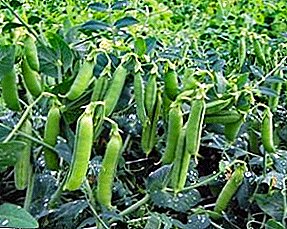 However, pea has one unpleasant feature: it is very susceptible to fungal diseases and root rot, especially in conditions of high humidity. Therefore, if a culture affected by such a disease grew on the site, next year neither peas nor other legumes should be planted in this place. Spores of such diseases can persist in the soil for 5-6 years, so the whole period of the bed is better to use under less susceptible to these diseases culture.
However, pea has one unpleasant feature: it is very susceptible to fungal diseases and root rot, especially in conditions of high humidity. Therefore, if a culture affected by such a disease grew on the site, next year neither peas nor other legumes should be planted in this place. Spores of such diseases can persist in the soil for 5-6 years, so the whole period of the bed is better to use under less susceptible to these diseases culture.
What to plant afterwards: the table of vegetable crop precursors during planting
With regard to the desirable and undesirable precursors of specific vegetable crops, there are a huge number of general and specific rules, summarized for clarity in various tables. You can check with them whenever you plan the corresponding rotations.
For example, you can group the crop rotation rules as follows:
| Culture | Good predecessor | Possible predecessor | Bad predecessor |
| Potatoes | Legumes, cucumbers, cabbage | Carrots, beets, onions | Solanaceae (tomatoes, eggplants, peppers) |
| Garlic, onion | Potatoes, carrots, legumes, cucumbers | Cabbage, Tomatoes, Beets | Onions, garlic, pepper, physalis |
| Tomatoes | Cabbage (especially cauliflower), carrots, onions, cucumbers, greens | Beet | Any solanaceous, Physalis |
| Pumpkin (cucumbers, zucchini, squash, pumpkin) | Legumes, solanaceous (potatoes, tomatoes), cabbage, onions | Beet greens | Any pumpkin |
| Legumes (peas, beans, beans) | Strawberries, cucumber, potatoes, cabbage, | Tomatoes | Perennial herbs |
| Carrot | Onions, cucumber | Radish, beet, cabbage | |
| Greenery | Cabbage, cucumbers | Legumes, potatoes, tomatoes, onions | Carrots, parsnips, celery |
| Eggplant | Legumes, turnips, swede, cucumber, cabbage, onions, melons | Beet | Solanaceae |
| Pepper | Turnip, carrot, cucumber, cabbage, rutabagus, legumes, | Onion garlic | Solanaceae, pumpkin |
| Beet | Potato, cucumber, onion | Legumes, Tomatoes | Carrot |
| Cabbage | Legumes, Solanaceae, Onions, Garlic | Salad, corn | Pumpkin, rutabaga, carrots, turnips, radishes, turnips |
However, correctly determine the predecessors of vegetables when planting will help not only the table, but also firmly learned rules.
Important! Strongly bad predecessors are: beet, radish, turnip and radish for cabbage (and vice versa); carrots, tomatoes and cabbage - for onions, beans - for carrots and cucumbers, carrots for cucumbers and beets.But after that you can plant carrots and other root vegetables, so it is after garlic or onions. Also, the roots grow well after the greens and vice versa.
Neighboring cultures
In addition to answering the question of what to plant after which, it is equally important to know also what to plant with, that is, what crops can and cannot be planted next to.The fact is that plants have an influence on each other, which can be both positive and negative. Knowing the basic rules, you can avoid mistakes and solve many problems that prevent obtaining a stable crop.
For example, as mentioned above, the plant root system releases toxic substances that protect the crop from diseases and pests. At the same time, such poisons can harm neighboring plants, and, on the contrary, can provide them with additional protection. Thus, the colins secreted by mustard have a beneficial effect on peas, carrots and garlic, but they are poorly tolerated by cabbage. Knowing this feature, it is easy to determine with what you can plant peas and do not plant cabbage.
What crops should be planted next door
So, joint planting is an important crop rotation rule, which makes it possible to optimally use the limited space of the site, as well as improve crop yields.  For example, potatoes and beans are great neighbors. He protects her from such a pest as a grain, and she fills his need for nitrogen and scares the Colorado potato beetle. In addition to beans, cabbage, corn, spinach, eggplants, horseradish, carrots, radishes, dill, and lettuce are useful next to the potatoes. All these plants have a beneficial effect on the potato harvest, removing excess moisture from the soil. And onions and garlic, planted nearby, protect potatoes from late blight.
For example, potatoes and beans are great neighbors. He protects her from such a pest as a grain, and she fills his need for nitrogen and scares the Colorado potato beetle. In addition to beans, cabbage, corn, spinach, eggplants, horseradish, carrots, radishes, dill, and lettuce are useful next to the potatoes. All these plants have a beneficial effect on the potato harvest, removing excess moisture from the soil. And onions and garlic, planted nearby, protect potatoes from late blight.
By the way, garlic has a beneficial effect on many cultures, so the options with which to plant it are enough. Strawberries are considered to be classics as these plants are equally useful for each other: garlic protects naughty strawberries from diseases and pests, and the berry contributes to the formation of more cloves in garlic. The same effect on the plant have the enzymes secreted by carrots: under their influence, the bulb of garlic becomes larger.
Did you know? If you plant garlic and horseradish alongside, the amount of vitamin C increases in both.Garlic saves not only vegetable crops, such as tomatoes, beets, cucumbers, carrots, but also gladiolus flowers, carnations, roses, etc. for him, onion flies can save calendula and chicory.
Dill and corn - this is what you can plant next to cucumbers, carrots get along well with peas, the peas themselves - with potatoes, tomatoes and eggplants. Gourds are better to plant separately.
Other rules regarding what to plant in the beds can be presented in the form of a table:
| Culture | Good neighbors | Bad neighbors |
| beans | cucumbers, potatoes, cabbage, lettuce, radishes, beets, tomatoes, eggplants, melons and gourds | peas, garlic, onions |
| peas | cabbage, lettuce, carrots, radishes | beans, potatoes, garlic, onions, tomatoes |
| wild strawberry | garlic, onion, lettuce, radish | |
| cucumbers | beans, garlic, cabbage, lettuce, celery, onions, greens | tomatoes, radishes, potatoes, zucchini |
| potatoes | beans, onion, garlic, cabbage, eggplants, horseradish, carrots, dill, salad | tomatoes, peas, sunflower |
| cabbage | peas, cucumbers, potatoes, lettuce, radishes, beets | garlic, onion, tomatoes |
| beet | cucumbers, salad | onions, cabbage |
| tomatoes | garlic, cabbage, lettuce, leek | peas, cucumbers, potatoes |
| bow | strawberries, cucumbers, lettuce, carrots, beets | beans, cabbage, tomatoes |
| pepper | cucumbers, kohlrabi | tomatoes, legumes |
| zucchini | bean, beet, onion | cucumbers |
"Neighbors-enemies"
As can be seen from the above table, in addition to a good neighborhood, there is also a very undesirable neighborhood. As a rule, plants are “hostile” because of the incompatibility of the substances that they secrete. For example, black walnut has a depressing effect on most vegetables because of the yuglon it produces. Not good are the vegetables and the neighborhood of wormwood. If you plant legumes and onions next to each other, both will develop poorly. With fennel, literally all cultures feel oppressed, so it is better to plant this plant separately from others. Potatoes and cucumbers, tomatoes and strawberries are also poorly compatible.  Eggplants and tomatoes do not like the neighborhood of other solanaceous ones, peppers and beets, cabbage and strawberries do not get along nearby.
Eggplants and tomatoes do not like the neighborhood of other solanaceous ones, peppers and beets, cabbage and strawberries do not get along nearby.
Did you know? It is interesting that such a beautiful and beloved conifer tree, like a spruce tree, has an adverse effect on almost all trees, and this effect persists for decades after the spruce tree itself was cut down.Sometimes it happens that plants have different effects on each other depending on their number. What is called, there is medicine in a spoon, and poison in a cup. In this case, you can arrange the neighborhood of such a culture in small quantities, for example, on the edge of the bed. For example, such an experiment can be carried out with valerian, yarrow or nettle, having landed them in small groups near vegetables.
Thus, it is important for any gardener to know what to plant after which, and good planning of crops during planting is a way to protect the soil from depletion and to help plants naturally support each other for better growth and development.


